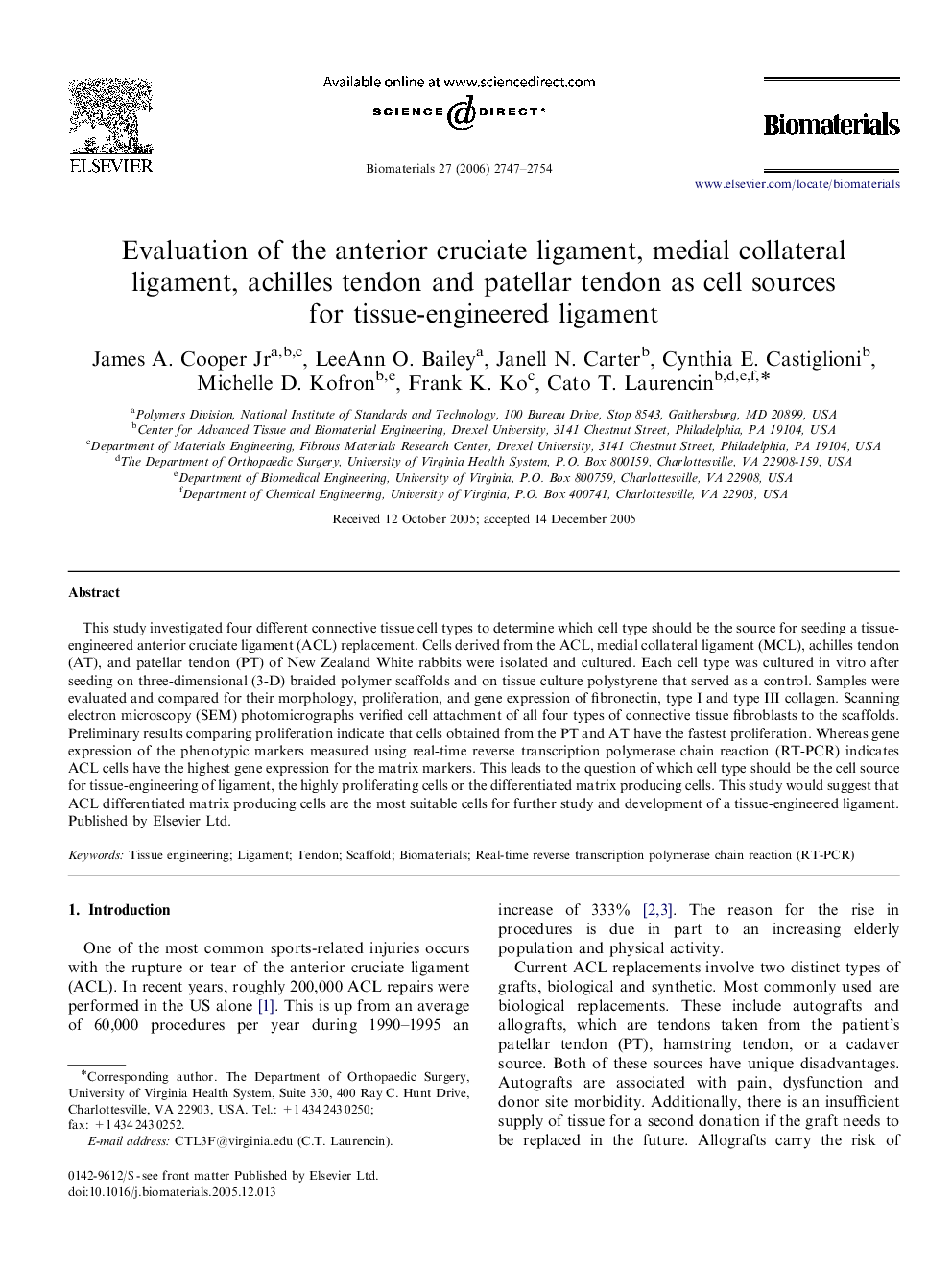| Article ID | Journal | Published Year | Pages | File Type |
|---|---|---|---|---|
| 11843 | Biomaterials | 2006 | 8 Pages |
This study investigated four different connective tissue cell types to determine which cell type should be the source for seeding a tissue-engineered anterior cruciate ligament (ACL) replacement. Cells derived from the ACL, medial collateral ligament (MCL), achilles tendon (AT), and patellar tendon (PT) of New Zealand White rabbits were isolated and cultured. Each cell type was cultured in vitro after seeding on three-dimensional (3-D) braided polymer scaffolds and on tissue culture polystyrene that served as a control. Samples were evaluated and compared for their morphology, proliferation, and gene expression of fibronectin, type I and type III collagen. Scanning electron microscopy (SEM) photomicrographs verified cell attachment of all four types of connective tissue fibroblasts to the scaffolds. Preliminary results comparing proliferation indicate that cells obtained from the PT and AT have the fastest proliferation. Whereas gene expression of the phenotypic markers measured using real-time reverse transcription polymerase chain reaction (RT-PCR) indicates ACL cells have the highest gene expression for the matrix markers. This leads to the question of which cell type should be the cell source for tissue-engineering of ligament, the highly proliferating cells or the differentiated matrix producing cells. This study would suggest that ACL differentiated matrix producing cells are the most suitable cells for further study and development of a tissue-engineered ligament.
